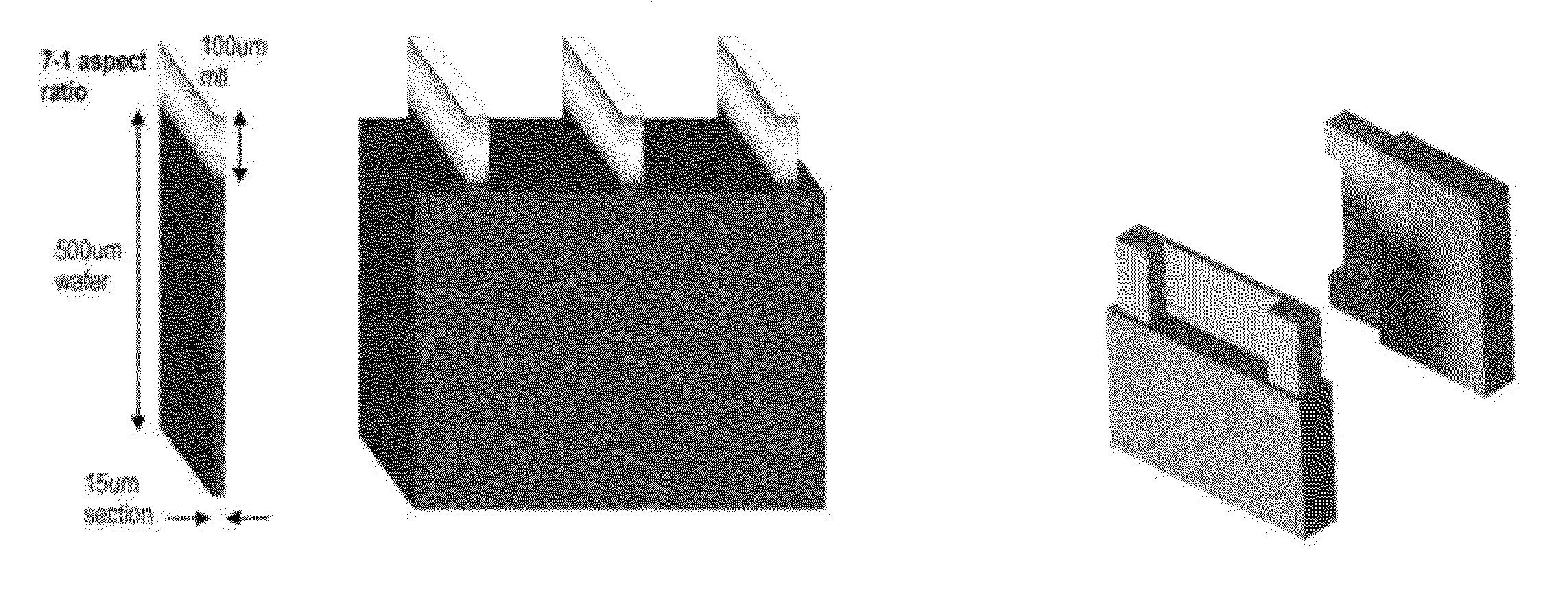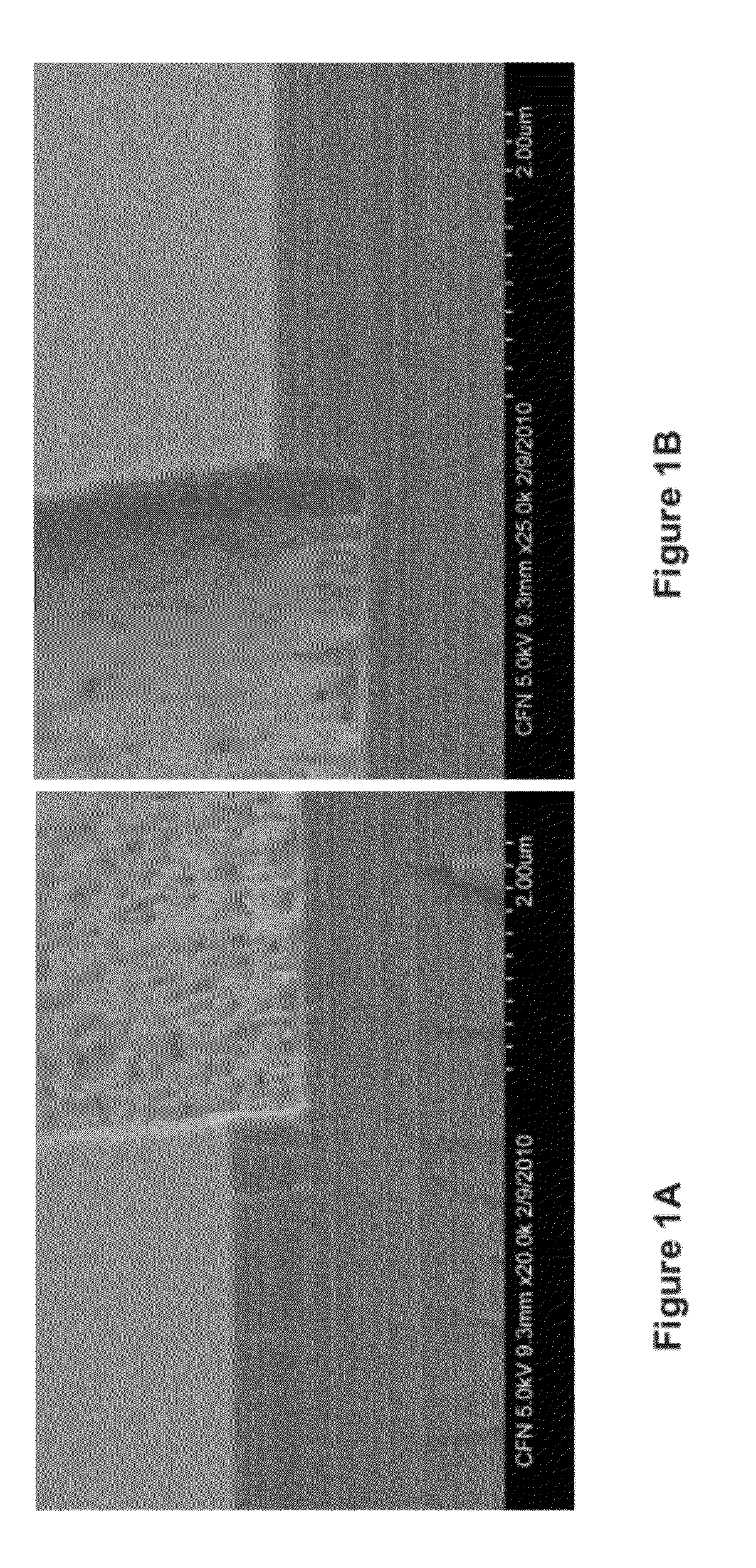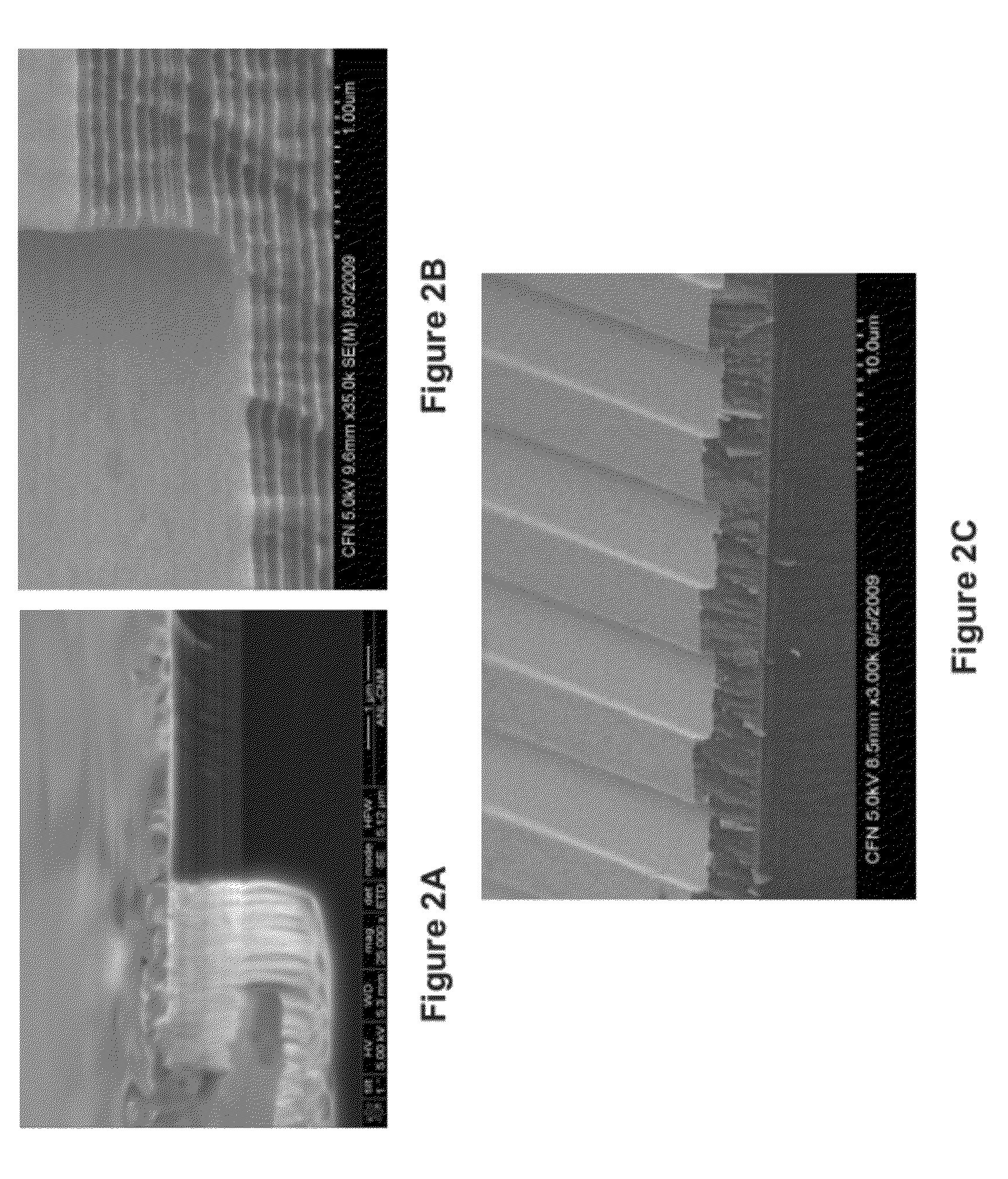Technique for Etching Monolayer and Multilayer Materials
a technology of monolayer and multilayer materials, applied in the direction of nanoinformatics, basic electric elements, nuclear engineering, etc., can solve the problems of less desirable multi-step processes, less etching, and less etching, so as to reduce the consumption of nickel hard-masks, the effect of high vertical anisotropy and adequate surface roughness
- Summary
- Abstract
- Description
- Claims
- Application Information
AI Technical Summary
Benefits of technology
Problems solved by technology
Method used
Image
Examples
examples
1. Multilayer Substrate Preparation
[0116]The multilayers are prepared by DC magnetron sputtering under high vacuum onto Si (100) wafers. Layers are deposited by raster-scanning the substrate over stationary targets with figured apertures at well-defined velocities using a rotary deposition system in the BNL, NSLS-II deposition laboratory using a method that has been previously reported (Conley, R., Liu, C., Kewish, C. M., Macrander, A. T., Morawe, C., “Multilayer growth in the APS rotary deposition system”, Proc. SPIE 6705, 670505 (2007); Conley, R., et al., “Wedged multilayer Laue lens”, Rev. Sci. Instr. 79, 053104 (2008); and Kang, H., et al., “Nanometer Linear focusing of Hard X Rays by a Multilayer Laue Lens”, Phys. Rev. Letters 96, 127401 (2006); each of which is herein incorporated by reference). Sputtering targets with dimensions of 3 inch diameter and 0.25″ thick are comprised of boron-doped silicon and hot-pressed WSi2. Initial tests utilize very simple periodic multilayer ...
example 2
CF4 / O2 Etching (Prior Art)
[0121]Initial tests were performed using a CF4 / O2 gas mixture due to reports in the literature which indicate, separately, that this particular gas combination has successfully etched both Si and WSi2 (Oehrlein, G. S., Lindstom, L. J., “Competitive reactions of fluorine and oxygen with W, WSi2, and Si surfaces in reactive ion etching using CF4 / O2”, Journal of Vacuum Science &Technology A: Vacuum, Surfaces, and Films 7 (3), 1035-1041 (1989); Abe, H., Yoneda, M., Fujiwara, N., “Developments of Plasma Etching Technology for Fabricating Semiconductor Devices”, Jap. J. of Appl. Phys. 47 (3), 1435-1455 (2008); and Lee, Y. H., Chen, M.-M., Ahn, K. Y., Bright, A. A., “Reactive etching mechanism of tungsten silicide in CF4-O2 plasma”, Thin Solid Films 118 (2), 149-154 (1984); all of which are herein incorporated by reference). CF4 provides fluorine radicals to perform the chemical etching of both Si and WSi2, and oxygen acts as a passivation agent on the sidewalls, ...
example 3
SF6 / O2 etching
[0124]A. First Embodiment with RIE Only and Fluorine Chemistry Only
[0125]One advantage that SF6 brings over CF4 is that more fluorine radicals are available to react with the multilayer materials. When etching Si only, SF6 has been shown in other studies to realize a faster etching rate when compared to CF4 (Buyanova, I. A., Henrya, A., Monemara, B., Lindströmb, J. L., Oehrlein, G. S., “Photoluminescence characterization of SF6—O2 plasma etching of silicon”, Materials Science and Engineering B36, 100-103 (1996); which is herein incorporated by reference). The initial experimental conditions used for this gas, SF6, are chosen to be very similar to those employed for the CF4 / O2 chemistry. FIG. 2 illustrates typical cross-section profiles of a multilayer of WSi2 / Si etched by RIE using a mixture of 91% SF6 / 9% O2 at a pressure of 25 mTorr using an RF power of 250 W at room temperature at the CFN at BNL (FIG. 2C) and at −30° C. (FIG. 2B); RF power of 100 W at room temperatur...
PUM
| Property | Measurement | Unit |
|---|---|---|
| radio frequency power | aaaaa | aaaaa |
| inductively coupled plasma power | aaaaa | aaaaa |
| pressure | aaaaa | aaaaa |
Abstract
Description
Claims
Application Information
 Login to View More
Login to View More - R&D
- Intellectual Property
- Life Sciences
- Materials
- Tech Scout
- Unparalleled Data Quality
- Higher Quality Content
- 60% Fewer Hallucinations
Browse by: Latest US Patents, China's latest patents, Technical Efficacy Thesaurus, Application Domain, Technology Topic, Popular Technical Reports.
© 2025 PatSnap. All rights reserved.Legal|Privacy policy|Modern Slavery Act Transparency Statement|Sitemap|About US| Contact US: help@patsnap.com



